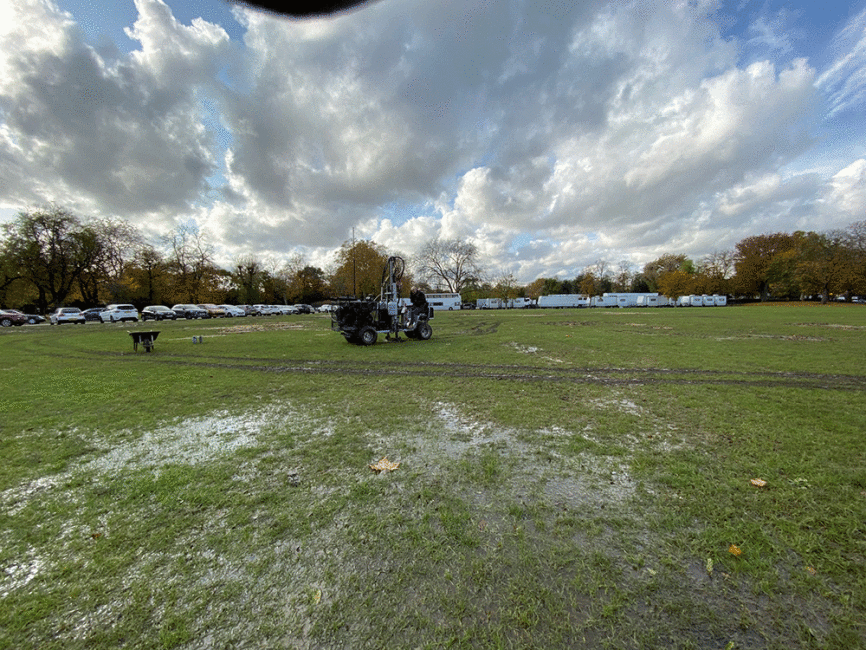After the Flood
The long, hot summer of 2022 made the year the second warmest on record in the UK and led to drought in many areas. With the ground dried out and continued heavy footfall, amenity areas, sports fields, parks, other tree lined spaces and even domestic back gardens suffer heavy soil compaction.

When the rains come, water is unable to penetrate the soil and sports grounds in particular turn into quagmires, stopping play and resulting for many in lost revenue. Exceptionally heavy rainfall leading to flooding has a number of other knock-on effects for turf and trees. Flood waters are heavy enough to force the oxygen out of the soil structure, leading to dead or dying turf and trees showing signs of severe stress, leaf fall and rotting roots. No amount of normal aeration, spiking or decompaction of the topsoil is going to solve a problem that goes much deeper. That is where deep aeration specialists are called for and one company, Terrain Aeration, has been solving these problems for well over thirty years.
Take some typical examples. A bowling green in Wales that has
seen over ninety years of play. Built on shale, like so many, even
with regular Vertidraining, the ground had become compacted at
depth. The club treasurer remembers well the day in 2018.
"The green was filling with water before my very eyes," he says,
"and after the heavy showers it remained quite sodden and
unplayable. It seemed no amount of work could get it back into
shape." This left fifty or so members without playing facilities
until it dried out. One contractor working with London councils has
among the sites under their watchful eye many of the city's sports
pitches, of which there are ninety-five football pitches, ten
cricket squares, bowling greens and running tracks.
"A lot of the sites are on made up ground and experience major problems with drainage," says their parks officer. "We have carried out aeration down to 300mm, but it's not enough to get to the pans."
So what's the answer? Terrain Aeration has a range of machines with the ability to send a probe to a depth of one metre. It penetrates the ground with the help of its built-in JCB road breaker, reaching the pan. Here it injects compressed air, working on a grid system and fragmenting the ground into fissures. These interlink to help restructure the soil and let in vital oxygen.
Turf roots will grow stronger and uniquely the soil structure is kept open by Terrain Aeration's Terralift machine process, which has proven itself over the past 30 years. With the Terralift's probe reaching 1m depth, it's also the perfect way to help move excess water away from stagnating around tree roots. By going deeper than the growing roots, excess water can percolate away and save the roots from rotting. Again, vital oxygen is injected into the soil along with other products to help with the root system in re-establishing itself.
The results being a healthier and stronger root growth, a visibly stronger canopy and even more fruit on the trees. Diseases such as Phytophthora (water borne problems for Yew trees) can be stopped as opening the soil structure and injecting oxygen back into the soil is beneficial to the health of the tree. In the above examples Terrain Aeration's system has come to the rescue after the flood for sports grounds, parks and even new-build gardens for major housebuilders' developments.
Terrain Aeration www.terrainaeration.co.uk 01449 673783

